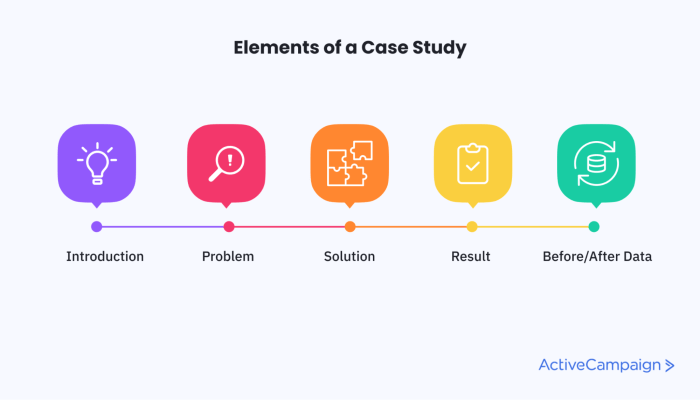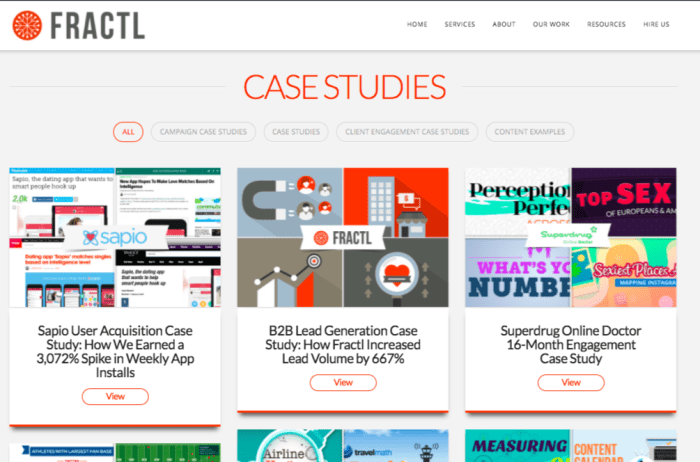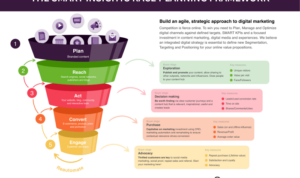Marketing with Case Studies takes you on a journey through the power of real-life examples in shaping successful marketing strategies. From showcasing credibility to enhancing content, this topic dives deep into the world of case studies.
Introduction to Marketing with Case Studies
Case studies in marketing are detailed examinations of successful marketing strategies, tactics, and campaigns used by companies to achieve specific goals. These real-life examples showcase how businesses have effectively implemented various marketing techniques to drive sales, increase brand awareness, or engage with their target audience.
Using case studies in marketing strategies is crucial for several reasons. Firstly, they provide valuable insights into what works and what doesn’t in the ever-evolving landscape of marketing. By analyzing successful case studies, marketers can learn from past experiences and apply proven tactics to their own campaigns. Additionally, case studies serve as social proof, demonstrating to potential clients or customers the tangible results that can be achieved through specific marketing efforts.
Examples of Successful Marketing Campaigns using Case Studies
- Apple’s “Shot on iPhone” campaign: This campaign featured user-generated content showcasing the quality of photos taken with iPhones, highlighting the product’s camera capabilities and encouraging user engagement.
- Dove’s “Real Beauty” campaign: Dove’s powerful marketing campaign challenged beauty stereotypes and promoted self-acceptance, resonating with consumers and creating a strong emotional connection with the brand.
- Coca-Cola’s “Share a Coke” campaign: By personalizing their packaging with individual names, Coca-Cola successfully engaged consumers and encouraged social sharing, leading to increased sales and brand loyalty.
Benefits of Using Case Studies in Marketing
Case studies are a powerful tool in marketing that can provide numerous benefits for businesses looking to showcase their products or services. One of the key advantages of incorporating case studies into marketing efforts is the ability to build credibility and trust with potential customers. By presenting real-life examples of how a product or service has successfully met the needs of previous clients, businesses can demonstrate their expertise and reliability in a tangible way.
Building Credibility and Trust
Case studies offer a unique opportunity for businesses to establish trust with potential customers by showcasing their track record of success. When customers see concrete examples of how a product or service has solved a problem or delivered results for others, they are more likely to trust that the business can deliver similar outcomes for them. This can help businesses differentiate themselves from competitors and build a positive reputation in the eyes of consumers.
Showcasing Real-Life Examples
Another benefit of using case studies in marketing is the ability to showcase real-life examples of product or service success. These case studies provide a glimpse into how a business has helped actual clients overcome challenges, achieve goals, or improve their operations. By highlighting specific details and outcomes, businesses can paint a vivid picture of the value they can provide to potential customers. This can be particularly effective in industries where results are tangible and measurable, such as healthcare, technology, or consulting.
Creating Effective Case Studies

When it comes to creating effective case studies for marketing purposes, there are several key components that you need to consider. From collecting data to structuring the case study, each step plays a crucial role in ensuring maximum impact on your target audience.
Essential Components of a Compelling Marketing Case Study, Marketing with Case Studies
- Real-life Example: Start by choosing a real-life scenario that showcases your product or service in action. This will help readers relate to the case study and see the practical applications of what you’re offering.
- Problem-Solution Approach: Clearly Artikel the problem faced by the customer and how your product or service provided a solution. This narrative flow keeps the reader engaged and highlights the effectiveness of your offering.
- Data and Results: Include concrete data and results to back up your claims. Whether it’s statistics, testimonials, or before-and-after comparisons, providing evidence of success will strengthen your case study.
- Visual Elements: Incorporate visuals like charts, graphs, and images to break up the text and make the case study more visually appealing. Visual elements can help convey complex information in a digestible format.
Collecting Data and Information for a Case Study
- Interviews: Conduct interviews with the customer to gather firsthand accounts of their experience. This personal touch adds authenticity to the case study and allows for direct quotes to be included.
- Data Analysis: Utilize data analytics tools to gather quantitative data that supports the success of your product or service. Numbers don’t lie, so make sure to include relevant metrics in your case study.
- Research: Dive deep into industry reports, market trends, and competitor analyses to provide context for your case study. Understanding the larger landscape helps position your offering in a competitive light.
Tips on Structuring a Case Study for Maximum Impact
- Clear and Concise: Keep your case study focused and to the point. Avoid unnecessary jargon or excessive details that might overwhelm the reader.
- Engaging Narrative: Tell a compelling story that captivates the reader from start to finish. Use a narrative arc that builds tension, presents the problem, and offers a satisfying resolution.
- Call to Action: End your case study with a clear call to action that prompts the reader to take the next step, whether it’s contacting your sales team, signing up for a demo, or visiting your website.
Leveraging Case Studies in Various Marketing Channels

Utilizing case studies in various marketing channels can significantly enhance the effectiveness of your marketing strategies. Case studies provide real-life examples of how your products or services have benefited customers, which can build credibility and trust with your target audience.
Social Media Marketing
Case studies can be a powerful tool in social media marketing campaigns. By sharing success stories of satisfied customers on platforms like Facebook, Instagram, and LinkedIn, you can create engaging content that showcases the value of your offerings. Encourage followers to interact with the case studies by commenting, sharing, or tagging others who may benefit from your products or services.
Email Marketing Campaigns
Integrating case studies into your email marketing campaigns can increase open rates and conversions. Include snippets of case studies in your email content to entice recipients to click through to read the full story on your website. Personalize the case studies based on the interests and pain points of your email subscribers to make the content more relevant and engaging.
Content Marketing Strategies
Case studies play a crucial role in enhancing content marketing strategies by providing valuable insights into how your offerings solve specific challenges or meet customer needs. Create in-depth case studies that highlight the unique features and benefits of your products or services, and incorporate them into blog posts, whitepapers, or infographics. By showcasing real-world examples, you can educate your audience and demonstrate the value of choosing your brand.












